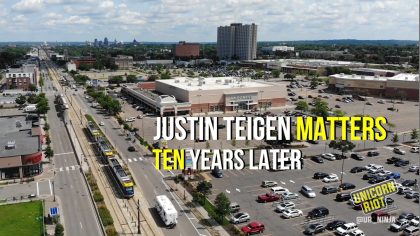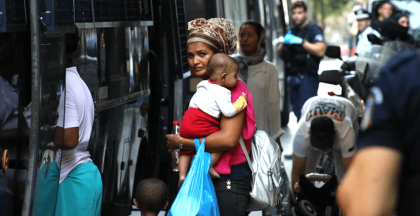Accelerating Climate Change is Transforming Iceland’s Ecosystem
Reykjavik, Iceland –
During our conversation we learned that
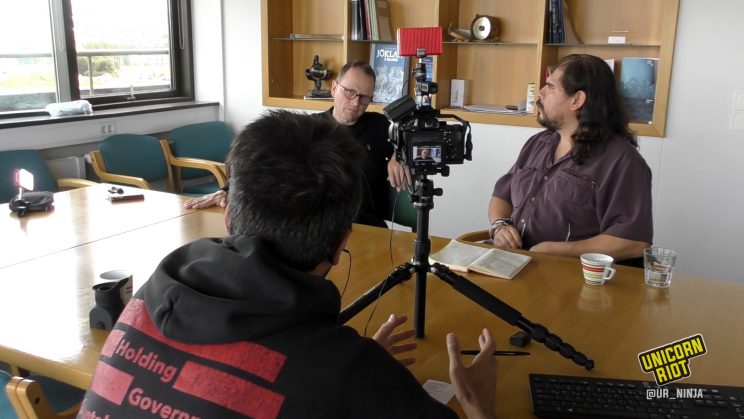
When asked about the glacier’s death, he said it was just the first due to human-fueled climate change, explaining, ‘Ok, you know that’s an example of a glacier vanishing, and I came up with this idea, ‘glaciocide.’ We asked the doctor where the idea for the word “glaciocide” came from and he said,
“We didn’t make the word up for fun, we wanted to convey the impression that this is something that is being done. You know there’s an agency behind it, in some sense. And we are that agency.“
The plaque below will be put at the base of the now-deceased Ok glacier.
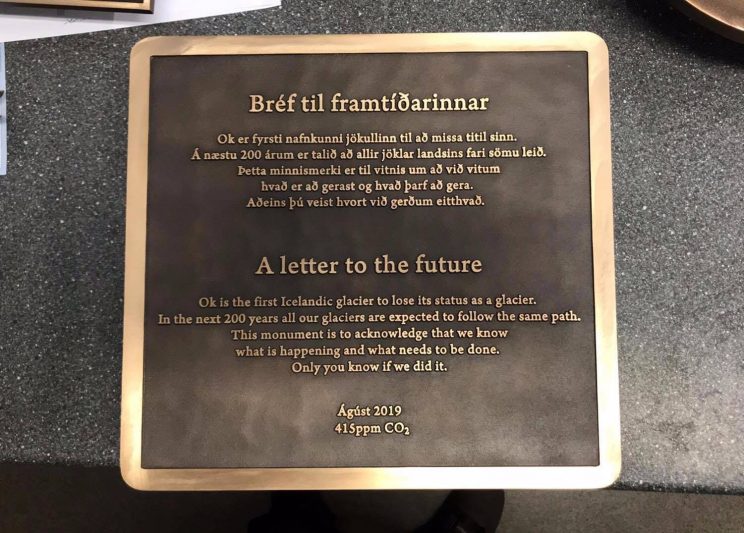
The plaque reads a stark warning which ends, “Only you know if we did it,” pointing out that only the future will know if humans are successful in mitigating climate destabilization.
2019 was the first year in recorded human history the concentration of atmospheric carbon dioxide (CO2) has been this high. As humans burn more fossil fuels the concentration of gases like CO2 continues to increase, which causes temperatures to rise in the well-known “greenhouse effect.” The phrase “415ppm CO2” on the plaque references these unprecedented levels reached earlier this year.
The glacial melt that threatens all of Iceland’s glaciers has been “substantial and increasing,” according to Dr. Björnsson. This warming has led to river systems changing course, longer growing seasons, and general greening of the island as plant life absorbs the excess CO2.
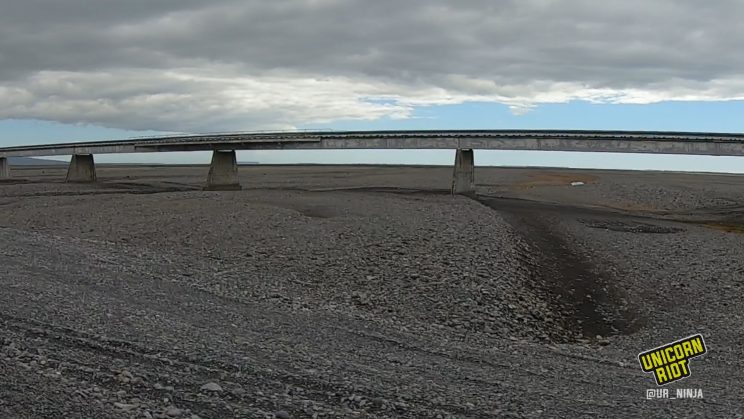
He told us that human-caused climate change had “impacted all their natural systems,” and that they had seen “a collapse in sea bird colonies. Alongside with that we get different birds, different sort of changes in the fauna, and new birds have come in. We also get new pests, insects.”
Furthermore he told us that the warming Icelandic waters have led to ocean acidification (OA). Warmer ocean waters are able to absorb more CO2 from the atmosphere, causing them to become more acidic. This acidification he said directly impacts the calcium levels in the water, which makes it harder for shell-forming animals like plankton which must expend more energy to form shells. He explained,
“This is really attacking food chains at the base of the food chain. So the effect will propagate upwards through the food chain, and this is something that is quite worrisome. You can think of this as sort of a kick to the system, and then changes in one thing that’s directly associated with warming may lead to changes in something else, which is in the secondary effect. So I think people have realized that the system is far more unstable than they had sort of assumed.“
While the effects of glacial melt have impacted the local environment, they are also impacting local economies. While speaking to Dr. we learned about Höfn, an ocean-side town whose harbor is under threat due to anthropogenic (human-caused) climate change.
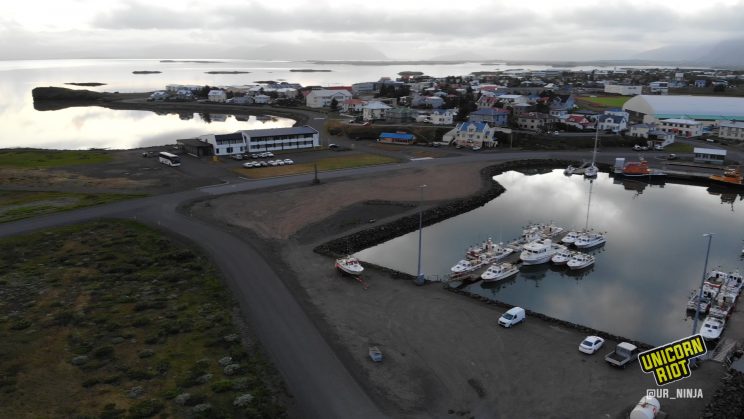
He told us that as the glaciers melt, the downward pressure of them on Iceland’s landmass is lessening. This is causing the island, a thin crust of land like a cork atop a volcano, to rise. He said, “You need the tides to come in and out, and as soon as you raise the town, raise the harbor, you reduce the volume of water that can flow in and out to flush away sediments. So this is not welcome at all for them. This is going to cause them problems in the harbor,” because for Höfn the melting glaciers are actually causing its land to rise faster than ocean.
When we asked Dr. further about sea level changes he said,
“Sea level rise on a global scale is going to be with us for hundreds of years. It is often very difficult to explain to people that there are certain decisions we make which will have consequences over a long long period. I can’t tell you by what time global average sea level rise will be one-and-a-half meter, but I can tell you it will happen. So, we might shift the argument from ‘Will it be one-and-a-half-meter?’ to ‘When?’ and it’s sort of prudent not to assume anything less than a meter of global sea level rise.“
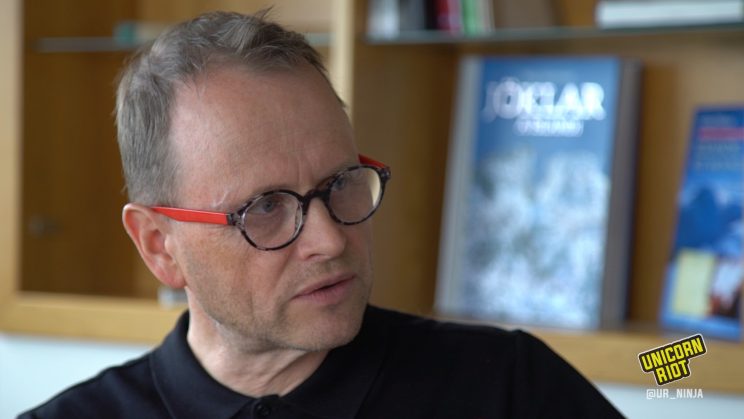
He ended with,
“You shouldn’t be as worried about what I tell you that I know of; you should be worried about the things I don’t know of. Because it turns out that usually surprises we get, very few of them are welcome.“
Dr. explained that they are also learning and having to adjust their findings as the climate continues to warm and they are faced with unexpected consequences. In Iceland as the melt of the glaciers accelerates it exposes more dark soil which absorbs more of the sun’s energy than white ice. Meanwhile the increasingly smaller glaciers no longer reaches high into the colder atmosphere, where their mountainous height used to induce precipitation. The doctor also said,
“Surface melting will lead to basal lubrication because there’s water going deep into the glacier. Reaching the bottom, and lubricating the bottom. And this means that the glacier actually starts going faster sliding faster to the sea than it use to. This effect was not suspected and as soon as we saw that you had to go back to all your estimates and say, ok, will this affect my estimates?“
As scientist learn of new effects of warming they must adjust all of their models, increasing the predicted speed at which things are changing.
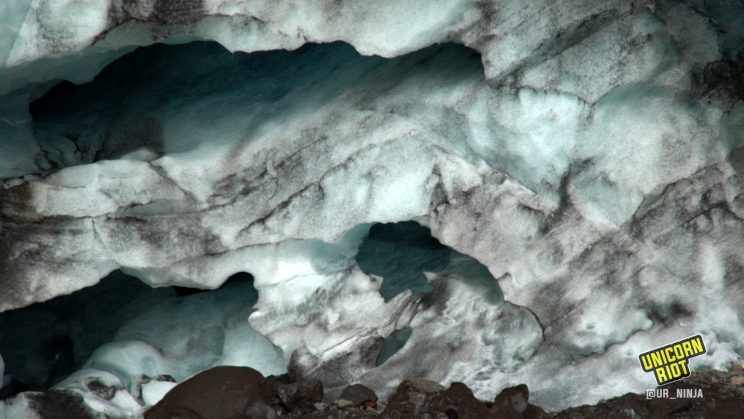
When we mentioned that most of this information wasn’t very uplifting, he responded with,
“If you want me to tell you nice things I can tell you, you know, stories, bedtime stories for little children or something, you know? But I mean that, the point is, I think it is far better to face the issues and then you can at least deal with them. There’s a fairly obvious fix. I’m not going to say an easy fix, but it’s obvious what you need to do, you have to cut down on the use of fossil fuels.“
In response to his obvious (but not easy) fix of reducing fossil fuel dependency, we asked him what it was like to see the climate change conversation dominated by climate deniers. We pointed out that not only has the United States withdrawn from the Paris Climate accords, but President Trump has called climate change a “hoax” and “doesn’t believe” it will impact the United States economy. Dr. said, “We need to have something done to reduce emissions and of course if the conversation is completely dominated by people who claim this is all nonsense, then of course nothing is going to happen.”
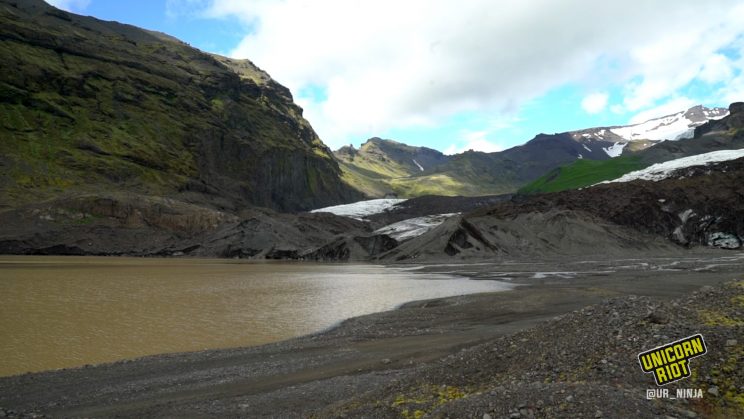
The doctor told us there isn’t just one thing we can do, and that the planet had missed the window to stop the suffering due to global warming, but he said it was possible to reduce that suffering. When we asked him how to do that he said,
“The only way to do that is to face the dangers head-on, and be honest about what they are, and be also honest about what you don’t know. Because very often when you talk about uncertainty people say, ‘Well, uncertainty means that [we] don’t know if it’s going to be really bad or just OK, so I’m going to assume it’s going to be OK.’ […] the prudent thing to do is actually assume it will be worse and react to that, because if it turns out to be true then the consequences of that are quite serious.“
He told us that people have to look at their lifestyles changes to reduces their emissions, and consume less overall. He said we must “take this issue seriously in your own life, and also take it seriously when it comes voting and then demand to political powers that they do something about it.”
During our time on Iceland we saw melting glaciers and a changing landscape, and wondered if we’d be some of the last people to observe some of the glaciers we looked upon. We learned of a long list of human-caused climate change effects already impacting the island. At the same time as we were in Iceland, Europe went through a second recording-breaking heatwave that beat the heat records set a week earlier. The heat waves are further accelerating the melt of the Arctic where waterways are opening up due to retreating ice. Governments are vying to claim the land and new shipping routes as corporations plan oil explorations.
The northern-most regions of the planet and those beings with the least resources are already most impacted by human fueled climate change. And as the plaque on the now-deceased glacier points out, only you will know if we did anything about it.
Follow us on Twitter, Facebook, Youtube, Vimeo, Instagram, and Patreon.
Please consider a tax-deductible donation to help sustain our horizontally-organized, non-profit media organization:



